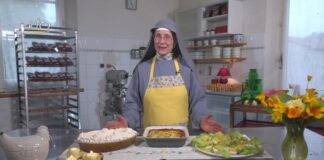It is a beautiful book of almost 3 kg. This demonstration of weight is not without reason. The book is dedicated to “these remarkable buildings and the equally remarkable people who work there.” On the back cover, the tribute in silver letters sets the tone and prepares for immersion. The words of the English historian Nicholas Foulkes placed in the introduction then guide the gaze and the imagination from workshops to factories. A world tour in 400 pages, and almost as many images taken all over France and around the globe, to highlight the factories, craftsmen and the mysteries that surround the making of Louis Vuitton luxury products.
In the chapter devoted to the historic workshop of the trunk maker, created in 1859 in Asnières-sur-Seine, we meet two women who smile with full teeth. They add the finishing touches to what will become a suitcase, chest or trunk. In a space bathed in natural light, one of them, visibly proud of the work accomplished, does not hide her joy: she inflates her right biceps, and, bulging her chest, wooden mallet in hand, resumes with conviction and happiness the famous pose of Rosie the riveter, a key figure in the history of women at work.
It is in a completely different atmosphere, hushed and in white coats, that bathe the people and the precision tools of the high jewelry workshop on Place Vendôme. On each page of the book, from the ultramodern ranch of Rochambeau, in Texas, to Place Vendôme or Pont-Neuf, via Beaulieu-sur-Layon, Vendôme, Ducey, Drôme, Geneva, Veneto, the atmosphere is youthful, serene mood; the gestures, sure, precise, controlled, seem to punctuate the hours and give all their meaning to the days.
With the Manufactures book, the Louis Vuitton house defends the vision of work to which, generation after generation, it remains attached. And salute those who, for more than a century, have protected and transmitted the excellent know-how of a brand which, for once, weighs a little more than 3 kg.














